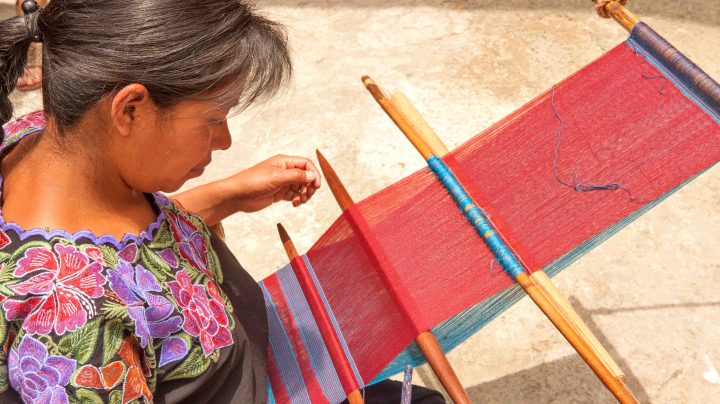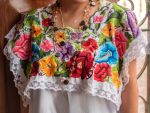Fast Fashion Brands Like Zara May Soon Be Unable To Plagiarize Indigenous Communities In Mexico

Indigenous Tzotzil women weaving a traditional Huipil at the loom. San Lorenzo Zinacantan is a small village in the southern part of the Central Chiapas highlands in the Mexican state of Chiapas.
After years of plagiarism controversies, Indigenous communities in Mexico may soon have a legal method to fight back against fast fashion retailers and high-end designers who copy their designs with no credit or pay. The Instituto Nacional de Antropología e Historia (INAH) in Mexico partnered with the Registro de Patrimonio Cultural y Mercado to protect the patrimony of Indigenous communities.
Both entities plan to create a map that will highlight communities affected by plagiarism, what infractions might be applicable, and who is copying the community. The map will help INAH investigate each case, provide a legal mechanism to protect communities, and create policy that will guarantee compensation and credit be given to these groups.
INAH plans to hire intellectual property experts, jurors, and anthropologists, and partner with Indigenous collectives, such as the Asociación de Voladores from Veracruz. Indigenous groups around the world have asked the United Nations to create sanctions for intellectual property since 2001, and last year, at a summit in Geneva, 189 representatives from various Indigenous groups negotiated policy with the UN’s World Intellectual Property Organization.
It’s easy for fashion brands to plagiarize Indigenous designs because there’s no existing legal mechanism that protects these communities and forces the brands to give credit and compensation to these groups. For many of these communities, artisanship is their main source of income. But plagiarized designs directly affect their income.

Since 2012, Indigenous communities in Hidalgo, Chiapas, and Oaxaca have accused eight luxury brands of cultural appropriation and plagiarism, according to Impacto, a Mexican organization that helps Indigenous communities protect their intellectual property. One of the most notorious cases came a few years ago with Isabel Marant’s appropriation of traditional Mixe huipil blouses. The French brand sold $290 “bohemian” tops that were straight-up copies of Mixe designs. The community held an hour-long press conference denouncing the plagiarism and invited the French designer to visit the Mixe community to see how they could work together. Another French brand, Antik Batik, claimed to have copyrighted the Oaxacan designs and threat to suit Isabel Marant. A French court ultimately ruled that the Mixe community owns the designs.
More recently, Zara came under fire after it copied embroidered designs from Indigenous artisans in Aguacatenango, Chiapas, to use on a blouse. Back in 2016, the Spanish fast fashion retailer also plagiarized an embroidery from the same community. Other brands, such as Urban Outfitters, Victoria’s Secret, and Madewell, have also been accused of cultural appropriation from Indigenous communities.